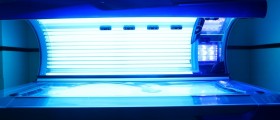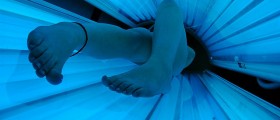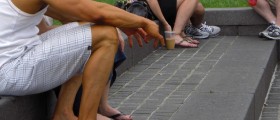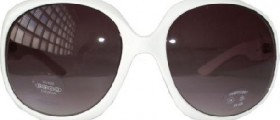Indoor Tanning and Tanning Beds
A tanning bed is an indoor device that emits ultraviolet radiation with the help of several fluorescent lamps and is commonly used to obtain a cosmetic tan. The tanning bed is a device developed primarily for medicinal purposes but has slowly evolved into a cosmetic tool.
Having atan appears to have a universally positive effect on the mood of bed or suntanned people. Men and women use indoor tanning salons in almost equal numbers.
Benefits of Indoor Tanning Beds
Besides the recognized benefits of tanning bets, such as the cosmetic advantage of the tan itself or establishing a protective base tan, numerous benefits are not usually considered.

The benefits of indoor tanning include the ability to save time by obtaining a quicker tan, as well as the convenience of being able to achieve a tan indoors. Tanning bed sessions last 10 to 20 minutes, brief when compared to lengthy outdoor sessions.
The ability to dose the amount of UV rays is also an important benefit, as well as the option of tanning in private, and avoiding exposing too much of the body to public scrutiny. Tanning indoors is also available irrespective of the time of year, season, or outside temperature, and allows for a more even tan compared to classic outdoor tanning.
There are multiple health benefits to indoor tanning, including helping the body produce more vitamin D, which is effective in preventing certain diseases, as well as providing relief for muscle pain.
Recent research has identified the fact that exposure to UV rays assists the body in creating a natural supply of Vitamin D. Vitamin D is important to the body as deficiencies of the said vitamin can cause osteoporosis and osteoarthritis, and therefore, utilizing a tanning bed to boost the vitamin D levels can be a major health advantage. This vitamin can also help prevent many forms of cancer, such as prostate, colon, and breast cancer.
Indoor tanning has also been known to treat some skin diseases like psoriasis and eczema, and drying out of acne, and can even act as a sunblock, as the tan has a protective factor of 2 to 4, though it is advised to still use sunscreen.
Finally, there also exist many advantages for the mental state of indoor salon users. The users exhibit a feeling of relaxation that is attributed to a release of endorphins in the body after tanning and tanning beds are also found to be beneficial in treating seasonal affective disorder (SAD), also known as the winter blues – a mood disorder that causes people to have depressive symptoms in the winter.
Risks and Factors for Consideration
There are several important risks to consider when examining indoor tanning. The amount of UV rays must be small enough to avoid damage to the skin and the eyes. Due to their convenience, tanning beds can be an appropriate substitute for the lack of sunlight, but it is important to keep in mind that tanning beds emit 50 to 100 more UV rays than sunlight, and therefore personal responsibility regarding time spent in the bed is critical. 50% of all people who use indoor tanning salons claim they use this form of tanning as a means of controlling their exposure to the ’’sun’’.
After-bedlotions should always be applied after tanning, and it is important to note that tanning beds share some of the same risks as outdoor tanning.
- Deliberate tanning is a common practice since 37–49% of women and 17–29% engage in deliberate tanning in both Europe and the United States. Tanning is most common among lighter skinned individuals. In one study 70% of light skin types (skin types I and II), 19% of skin types III and IV, and 0% with dark skin deliberately attempted to darken their skin. Many health benefits and risks have been attributed to UV exposure and tanning. We discuss these claims in light of the growing indoor UV and non-UV tanning industries.
- Exposure to sunlight has been linked to improved energy and elevated mood. The belief that people look better with a tan may partially explain this phenomenon. A report on the tanning attitudes of young adults found that 81% of individuals in 2007 felt that a tan improved appearance, whereas only 58% of individuals in 1968 held the same belief. Individuals with seasonal affective disorder report improved mood status when exposed to sunlight and to frequently tan. Although early studies had suggested that mood elevation was linked to increased endorphin levels, subsequent studies have not found such correlation.
- While UV radiation promotes skin malignancies like basal cell carcinoma, squamous cell carcinoma, and melanoma, the most serious of these cancers, the association for each type of skin cancer differs. Intermittent sun exposure and sunburns were positively associated with melanoma, while, chronic sun exposure was not. A weak association and dose-response relationship exists between sunbed use and melanoma, including a doubling of the risk to develop melanoma in individuals that started using tanning beds before the age of 35.

















Your thoughts on this
Loading...